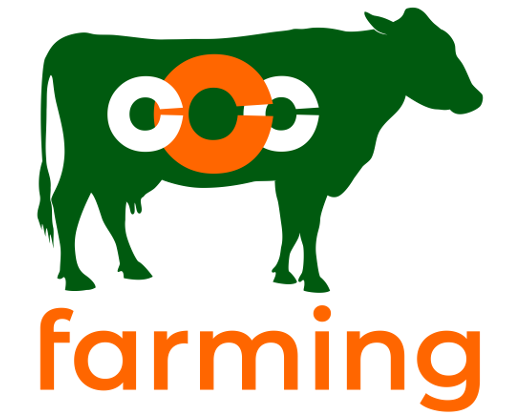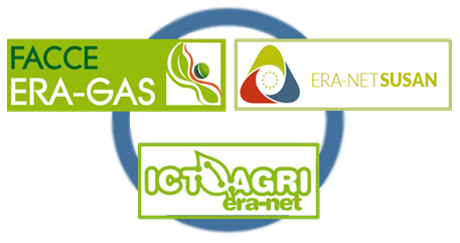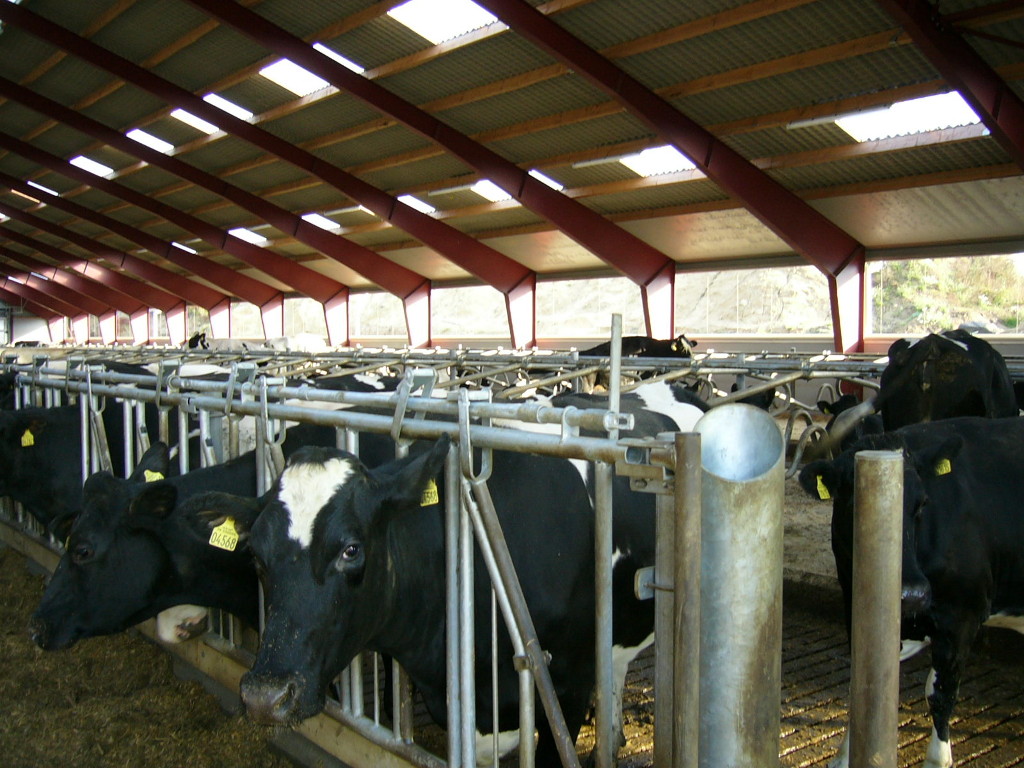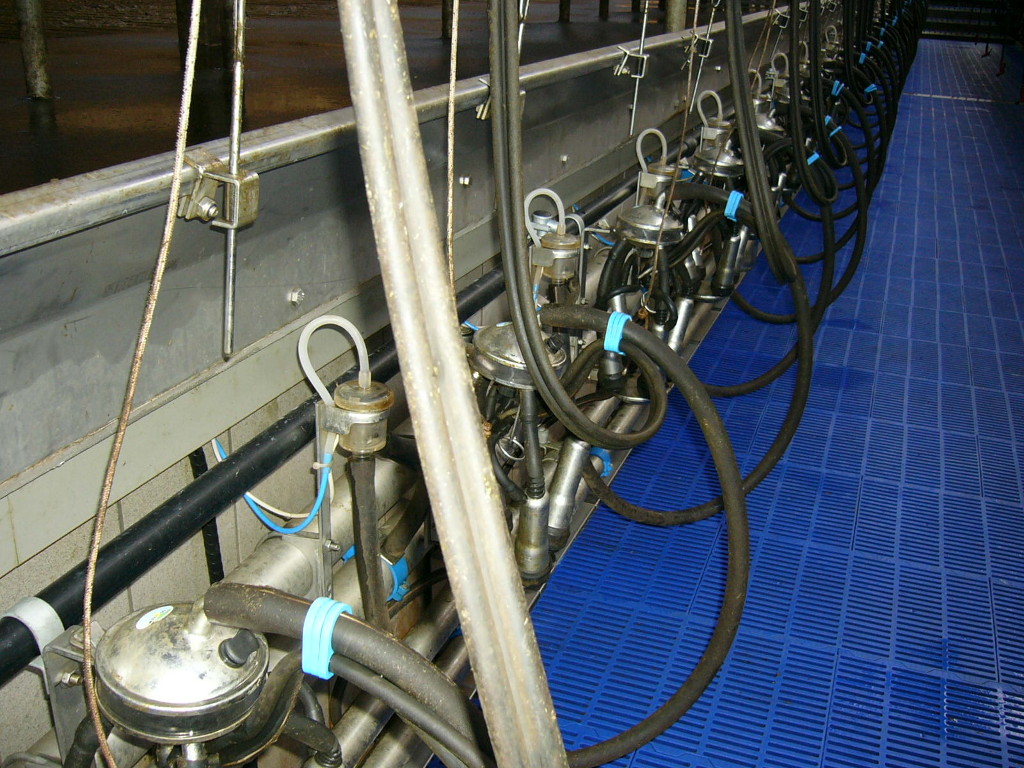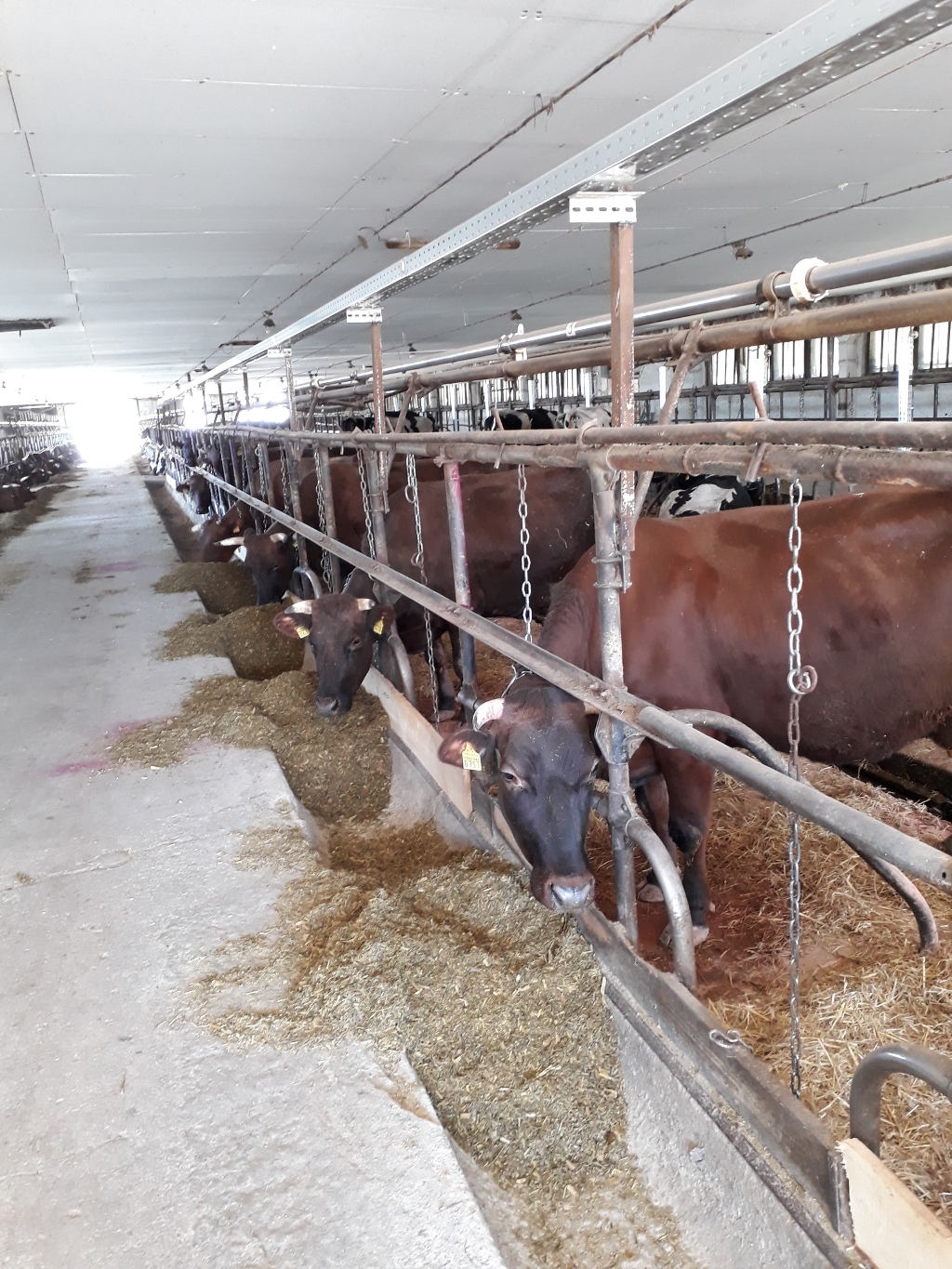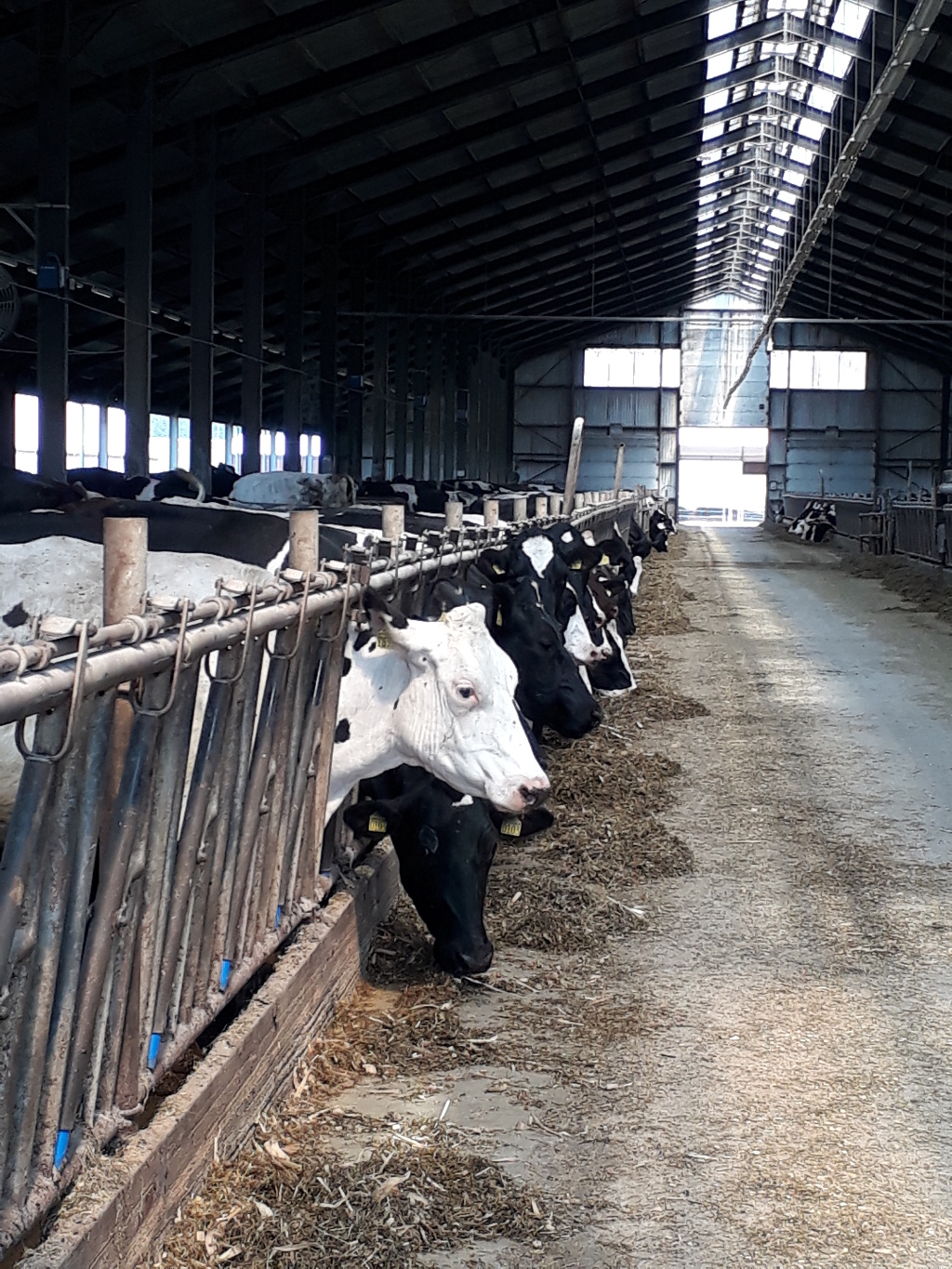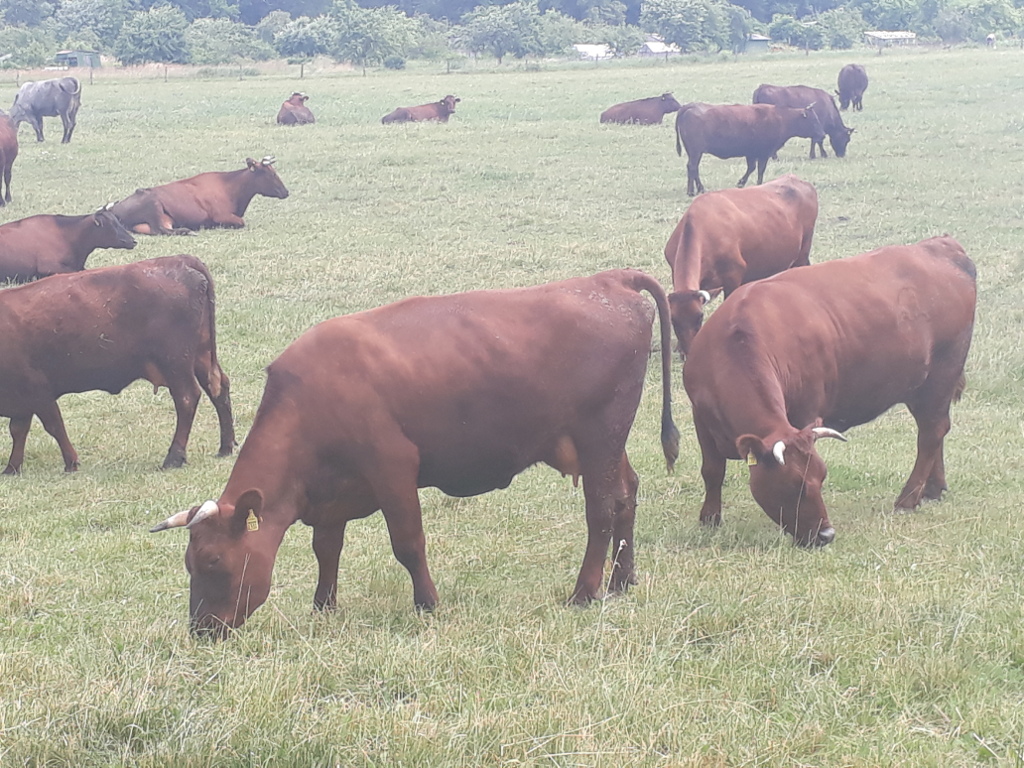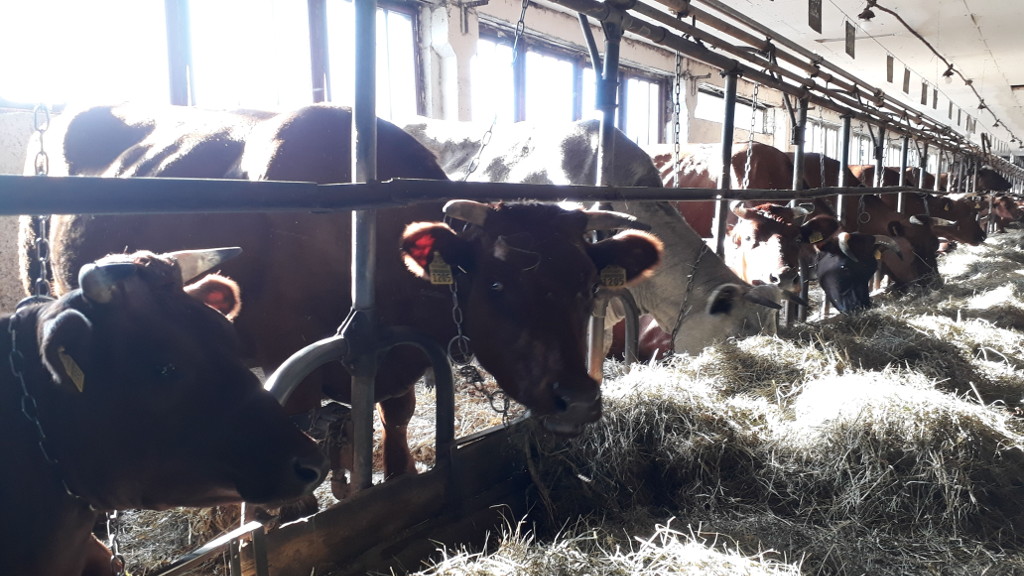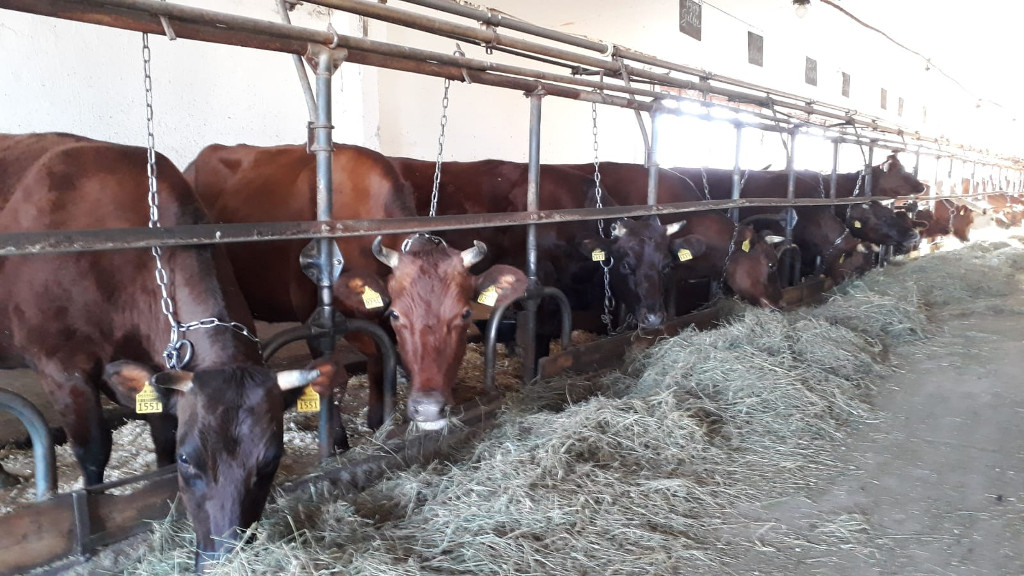
The aim
The aim of the project is to develop climate smart cattle farming systems reducing GHG and ammonia emissions while maintaining the social-economic outlook of the farm business. Key words are efficiency of production and care for climate. Central to the approach are innovative housing and manure handling systems in reducing emmissions, like use of composted bedding material, separation of faeces and urine, artificial floor constructions, manure cleaning robots, cow toilet, virtual fencing and ICT data collection techniques, and precision crop fertilization. Promising feeding, breeding and grassland mitigation practices are examined to contribute to the integrated systems approach.
The study will deliver an assessment of the environmental performance of a network of study field farms in eight EU-countries on basis of NPC balance tools and simple emission measurement methods. Researcher–farmer interaction will ensure improved performance and impact. Expert groups in each country evaluate the outcomes, and choose practices and techniques to be further examined in experimental set-ups. Suitable practices and techniques will be screened for their socio-economic robustness and political implications on basis of literature and the collected experimental data. Next, new farm systems will be built by assembling combinations of promising practices and techniques and will be tested on pilot and experimental farms for meeting the goals of this project.
Concept and approach
Concept and approach. The cattle sector is a major source of greenhouse gas (GHG) emissions resulting from methane (CH4), nitrousoxide (N2O) and carbon-dioxide (CO2) of 4.6 Gt CO2e yr-1 (Ripple et al., 2014).
GHG-emissions take place throughout the production chain. Almost two-thirds of all GHG-emissions from the cattle sector take place within the farm gate (in particular rumen fermentation, manure handling and land cultivation) and almost one-third by the production of inputs (especially fertilizers and concentrates). The remaining part of emissions occurs during the transport and processing of the output, i.e. products (De Vries et al., 2018).
This study focusses on the processes within the farm itself, thus at about two-thirds of the GHG-emissions. But it will include the interaction with the input and output segments of the chain when this is relevant, for instance when a trade off in emissions takes place. More than 50% of the GHG-emissions in the dairy chain, segments input and farm, and probably also in the other cattle sectors consist of methane. Methane originates from the enteric fermentation and emission from manure handling and storage. In intensive livestock systems about 33% of the total emission results from carbon-dioxide, which is mainly formed during the production of farm inputs by use of fossil energy sources (gasoline, diesel, natural gas, electricity). Nitrous-oxide contributes a bit more than 10% to the emissions and is produced by the transformation of nitrate and ammonia in the manure and soil. In more extensive systems the nitrous-oxide percentage is relatively higher and the carbon-dioxide percentage lower. At the European level the EU is committed to ambitious policies to reduce GHG-emissions from agriculture by 30% in 2030 compared to 2005. Agriculture belongs to the sectors which lie outside of the European Emission Trading system (ETS). Agriculture has to follow the so-called Effort Sharing Regulation (ESR; EC, 2016a). The 30% overall reduction goal is corrected for individual European countries on basis of their BNP (Bruto National Product per inhabitant).
The core of CCCfarming project is to study and provide new insights into the effect of a combination of promising practices on reducing emissions at a systems level. Ammonia emissions will be included in this study given its role as an indirect GHG and the fact that ammonia is linked to the concern about air quality and particulate pollution. The study will take an integrated approach to nutrient and nitrogen management to ensure more efficient resource use and lower losses across the farming systems.
A network of farms across Europe will be used to gather field data about the NPC balances on these farms and estimates of GHG emissions will be obtained by using state-of-the-art sensor technologies (especially within the housing) and well calibrated empirical modelling approaches (in manure storage and in the field). An interactive process with farmers is envisaged to improve the climate care farming approaches.
Expected impact
 Expected impact. The project plans to measure and demonstrate a reduction of GHG emissions on a
European network of field study farms. The reduction will be on average equal to the EU’s emission reduction goals
set for 2030. This will be achieved at a farm level by a combination of awareness raising, application of NPC tools,
and implementing new techniques and practices. The most promising farm systems will be designed for different regions
combining a viable economic and social future with a reduction in GHG emissions. The approach will be highly
innovative, using ICT elements of NPC- and foot print tools, manure robots for precision cleaning, a cow toilet
to experimentally separate urine and faeces, and a variety of innovative measurement approaches and sensors.
Know-how on NPC and feed print tools, emission factors and climate care cattle rearing systems will be reported
through contributions to the scientific literature and communicated with policy stakeholders. The fact that a group of
62 field study farms around Europe is able to accomplish the EU mitigation targets within a limited number of
years will be likely to achieve significant global attention and impact. Thus, this project will impact on farmers’
and their directly related business contacts ‘awareness, attitude, and practices, and improve the body of scientific
and practical knowledge on solutions to reduce GHG emission, while increasing insight in the socio-economic and
environmental effects.
Expected impact. The project plans to measure and demonstrate a reduction of GHG emissions on a
European network of field study farms. The reduction will be on average equal to the EU’s emission reduction goals
set for 2030. This will be achieved at a farm level by a combination of awareness raising, application of NPC tools,
and implementing new techniques and practices. The most promising farm systems will be designed for different regions
combining a viable economic and social future with a reduction in GHG emissions. The approach will be highly
innovative, using ICT elements of NPC- and foot print tools, manure robots for precision cleaning, a cow toilet
to experimentally separate urine and faeces, and a variety of innovative measurement approaches and sensors.
Know-how on NPC and feed print tools, emission factors and climate care cattle rearing systems will be reported
through contributions to the scientific literature and communicated with policy stakeholders. The fact that a group of
62 field study farms around Europe is able to accomplish the EU mitigation targets within a limited number of
years will be likely to achieve significant global attention and impact. Thus, this project will impact on farmers’
and their directly related business contacts ‘awareness, attitude, and practices, and improve the body of scientific
and practical knowledge on solutions to reduce GHG emission, while increasing insight in the socio-economic and
environmental effects.
 The project targets the call holistic theme by covering the whole cattle farm, the technical theme by applying tools
and innovative techniques to deal with emissions, and the societal theme by simulating and evaluating the
socio – economic impact of the various practices and techniques integrated in promising future farming systems,
adapted to local circumstances. The consortium and network of farmers will serve as ambassadors for climate
innovative efficient farming.
The project targets the call holistic theme by covering the whole cattle farm, the technical theme by applying tools
and innovative techniques to deal with emissions, and the societal theme by simulating and evaluating the
socio – economic impact of the various practices and techniques integrated in promising future farming systems,
adapted to local circumstances. The consortium and network of farmers will serve as ambassadors for climate
innovative efficient farming.
Open field days, agro-days, farmer magazine articles, audio-video material, practice abstracts and social media will be applied to spread the message at local level, while conference seminars and scientific articles are planned to spread the message within the science community.
